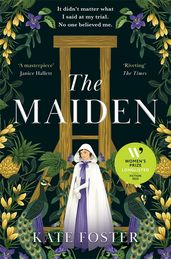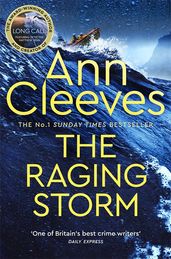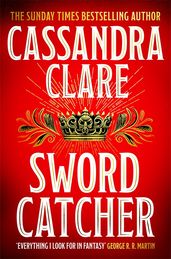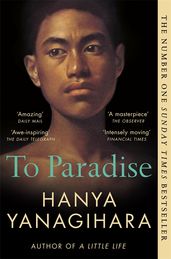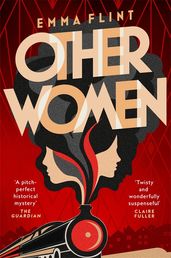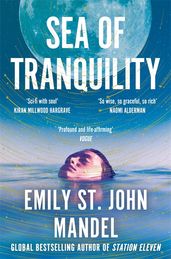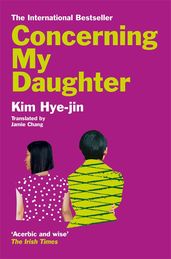Brilliant books by women to read now
We showcase some of our favourite new books by women, including two longlisted for the Women's Prize for Fiction 2024.

From crime and thrillers to science fiction and literature in translation, here are some of our favourite books by women so far this year (alongside some great reads from 2023, too).
Western Lane
by Chetna Maroo
Longlisted for the Women's Prize for Fiction 2024
For eleven-year-old Gopi playing squash has been a part of her life for as long as she can remember. With the whole family reeling from the untimely death of her mother, Gopi’s dad enrols her in a training regime that takes over her life and Gopi finds herself drifting apart from her sisters, and onto the court whenever she can. A story of grief, family and the immigrant experience, Western Lane is a coming-of-age story you won’t be able to stop thinking about.
The Maiden
by Kate Foster
Longlisted for the Women's Prize for Fiction 2024
Inspired by a real-life murder trial, The Maiden is a remarkable story with a feminist revisionist twist. Edinburgh, October 1679. Lady Christian is charged with the murder of her lover, James Forrester. She is quickly labelled an adulteress whore and murderess. But what led her to leave her respectable married life to risk everything for an affair? And does that make her guilty of murder? She wasn't the only woman in Forrester's life, and certainly not the only one who might have had cause to wish him dead.
One of the Good Guys
by Araminta Hall
Everyone thinks Mel and Cole seem like the perfect couple, with her making waves in her career, and him a supportive, hands-on parent. So, when Mel walks out on Cole, he can’t believe it. Craving a fresh start, he moves to the coast where he meets Lennie, a shy, private artist. When their quiet town finds itself at the heart of a mystery as two women go missing during a protest against gendered violence, the pair are left questioning how well they actually know each other. In her new psychological thriller, Araminta Hall asks: what happens when women have had enough?
Maude Horton's Glorious Revenge
by Lizzie Pook
When Maude Horton’s sister Constance disappears without a trace, she sets off through Victorian London’s dark underworld to find her. As Maude uncovers secrets the city’s sinister forces want to keep buried, she finds herself in grave danger. In this addictive, thrilling historical mystery you’ll find yourself rooting for Maude as she fights against the men who make their fortunes from others’ disadvantage and seeks the truth about what really happened to her sister.
The Women
by Kristin Hannah
Growing up in a sheltered, conservative family Frances “Frankie” McGrath has never imagined a life for herself outside her idyllic, albeit boring, California town. But when war is declared in 1965, she realises that women can be heroes too. Joining the Army Nurses Corps, Frankie lands in Vietnam, a world of destruction and death she could never have fathomed. As she cares for the wounded, she learns the power of female friendship and discovers a side of herself she never knew existed. The Women, the unputdownable new story from Kristin Hannah, is set to be adapted into a blockbuster film.
Bright Young Women
by Jessica Knoll
When Pamela Schumacher awakes in the middle of the night, she has no idea of the horror she’s about to encounter, and the lucky escape she’s had. As she paces through her sorority house, she finds two of her friends brutally murdered and two severely injured. In Seattle, Tina Cannon is searching for answers about what happened to her best friend Ruth, who vanished without a trace on a packed beach in the middle of summer. Two women seeking the same killer on different sides of 1970s America, one man on the run and a final tragedy which will end it all, Bright Young Women is Jessica Knoll at her thrilling best.
Whale Fall
by Elizabeth O'Connor
1938. A world on the cusp of everlasting change. Young Manod tries to imagine her future away from the barren, salt-stung Welsh island she has grown up on. So, when two anthropologists arrive from the mainland to learn more about the islanders’ way of life, Manod befriends them in the hope they offer her an escape. But as she finds herself entangled in their relationship, her ticket to a more exciting future gets further and further out of her reach.
The Raging Storm
by Ann Cleeves
Ann Cleeves is back with The Raging Storm, the new novel in the Two Rivers series starring Detective Matthew Venn. When intrepid adventurer Jem Rasco sails into the sleepy village of Greystone, Devon, the residents enjoy his tall tales and celebrity status until he vanishes as quickly as he arrived. When the volunteer lifeboat – launched after a hoax call – discovers Rasco’s body anchored off the infamous Scully Cove, the village is plunged into suspicion. DI Matthew Venn is drafted in to investigate, but will he be able to put his past aside and find the killer?
Sword Catcher
by Cassandra Clare
When Kel, a young orphan hired as a body double for Prince Conor Aurelian of Castellane, meets Lin Caster, a physician ostracised because of her magical abilities, the pair discover a conspiracy that will change Castellane forever. Will their love help them bring down a corrupt kingdom, or will their discovery lead to an eternal war? The thrilling first volume in the spellbinding Chronicles of Castellane, Sword Catcher is a story of magic, power and intrigue from Cassandra Clare.
Stone Blind

As the sole mortal in a family of gods, Medusa begins to realize that she is the only one who experiences change, the only one who can be hurt, and the only one who lives with an urgency that her family will never know. Then, when the sea god Poseidon commits an unforgivable act in the temple of Athene, the goddess takes her revenge where she can – and Medusa is changed forever. Writhing snakes replace her hair, and her gaze now turns any living creature to stone. Unable to control her new power, she is condemned to a life of shadows and darkness. Until Perseus embarks upon a quest. At last, Medusa's story is told.
To Paradise
by Hanya Yanagihara
This powerful and symphonic vision of America's past and present weaves three stories together with recurring notes and deepening themes. In 1893, New York is part of the Free States, and a gentle young member of a privileged family falls for a charismatic and impoverished music teacher. In 1993, Manhattan is being swept by the AIDS epidemic, and a young Hawaiian man with a wealthy older partner must hide his difficult family background. And in 2093, in a world where plague and totalitarian rule is rife, a young woman tries to solve the mystery of her husband's disappearance.
Homecoming
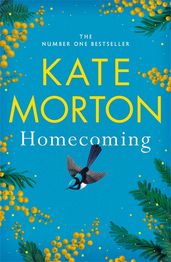
A gripping mystery set between Australia and London, Homecoming is the much-anticipated new novel by Kate Morton. When 89-year-old Nora's health takes an unexpected turn for the worse, Jess boards the first plane out of London, her home of twenty years, to be by her grandmother's bedside in Sydney. Soon, she discovers that the usually stoic Nora has been hiding a family secret and vows to get to the heart of the mystery of what happened on a fateful Christmas Eve sixty years before.
Everything's Fine
by Cecilia Rabess
When Jess first meets Josh at their Ivy League college she dislikes him immediately: an entitled guy in chinos, ready to take over the world, unable to accept that life might be easier for him because he's white, while Jess is almost always the only Black woman in their class. But as a tempestuous friendship turns into an electrifying romance that shocks them both, Jess begins to question who she is and what she’s really willing to compromise. Can love really be enough? This hugely funny and deeply moving love story offers no easy answers.
Other Women
by Emma Flint
Based on a real case from the 1920s, Other Women tells the story of Beatrice, one of the thousands of nameless and invisible unmarried women trying to make lives for themselves after the First World War, and Kate, the wife of the man Beatrice has fallen in love with. When fantasy and obsession turns to murder, two women who should never have met are connected forever.
Sea of Tranquility
by Emily St. John Mandel
An exiled Englishman in the early twentieth century, a writer trapped far from home in the future and a girl destined to die too young in the present day, each glimpse a world that is not their own, and a time-traveler is sent back from the 2400s to investigate. Emily St. John Mandel explores the idea of parallel worlds and possibilities, and plays with the very line along which time should run in this, her sixth novel.
Concerning My Daughter
by Kim Hye-jin
Translated by Jamie Chang
Filled with anger, confusion and disappointment when her thirty-something daughter brings her girlfriend home, a mother finds this new definition of family impossible to accept. The dynamics of mother-daughter relationships are placed under the spotlight in this sharp and moving examination of love in all its forms, translated from the original Korean.

